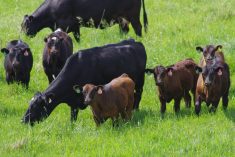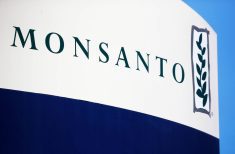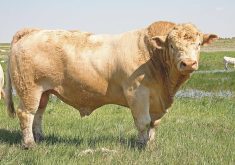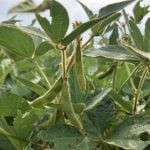FORECASTING Good crop year could mean the difference for some Alberta livestock producers
Alberta’s livestock producers are staying positive that 2013 could be a profitable year.
Representatives from various organizations throughout the province expressed their hopes that things will go their way this year, even as some of them face challenges and new player JBS enters the market.
Cattle industry has good potential
Brent Chaffee, chair of the Alberta Cattle Feeders’ Association, said the market is a bit unknown and could depend on how JBS handles buying their cattle. He said major issues facing members of his organization are continued volatility in the market, the planned resolution of the country-of-origin labelling in the U.S. that will help Canadian cattle prices and potential labour shortages. He predicted that if feed prices stay steady profits are possible, though he cautioned that while feedlots with large farming operations should do well, smaller ones that rely strictly on cattle could suffer losses depending on how the dollar and grain prices fluctuate. “I think it’s going to be tight,” he said of the market.
Read Also

Grazing ‘sweet spot’ boosts pasture performance
Timing-focused approach to pasture management touted to boost forage growth, livestock gains while also cutting farmer labour and inputs
Feeder Associations of Alberta chair Jim Bowhay said their members are trying to stay relevant and attract more youth to the industry. With cattle numbers down, Bowhay said the “dots line up” for a good market situation this year. He thinks they’ll be seeing expansion as profits pull more people to the sector. As for how his members will be doing, he said the industry can be profitable if input costs are kept in check, but said producers need to listen to what consumers want, to stay in the black.
Western Stock Growers Association chair Phil Rowland named upcoming provincial policies, such as the South Saskatchewan Regional Plan and the new energy regulator bill, as issues facing his members. He’s expecting the market to stay “relatively strong” but said having only two main packers is a bottleneck for sending product to markets outside of North America. “I’m hopeful that we’ve seen the end of our contraction,” he said, forecasting “2013’s going to be a profitable year.”
Pork industry challenging
“The major issue facing the producers in Alberta is profitability or the lack thereof,” said Frank Novak, chair of Alberta Pork. The industry has faced a variety of challenges over the past few years, he said, with the most recent one rising feed costs. A number of people have left the industry, he said, and more could leave. Novak said if 2013 is a good crop year that could be good news for pork producers. “I don’t expect the profits will be large,” he said, continuing that it will take years to reach any kind of financial strength again.
Lamb still in demand
Alberta Lamb Producers chair Ron den Broeder said his organization’s members are still going through an adjustment that saw prices drop in 2012. However, lamb is largely an import product and while a drought and economic woes in Europe caused the drop, he said, there’s still demand for lamb. “There is not enough lamb on the market,” den Broeder said. He said prices should climb, but he’s not sure when or by how much.
That demand means expansion could continue. “It depends what the prices are going to do. Right now we’re in expansion mode,” he said. He’s positive about the future of the industry, though he said producers have to carefully calculate their costs. He said Alberta Lamb Producers have tools to help their members with those calculations.
Positive outlook for bison producers
A steady demand and well-established markets are helping the bison industry stay stable, said Thomas Ackermann, chair of Bison Producers of Alberta. “We see it going, I wouldn’t say mainstream but it’s well known,” he said. Issues facing producers include trade barriers and the need to find more ways to include value-added products like sausage and jerky. He’s anticipating stable prices for finished animals. While more people are expanding, however, others are leaving so he’s not sure if it will balance out.
High feed prices could impact profitability but overall he said there’s a positive outlook for the industry.
Making a profit could be difficult
Lynn Jacobson, chair of the Wild Rose Agricultural Producers, said in general he sees some contraction coming in the livestock industry, especially for feeders. “I think the smaller feeders are going to have a hard time surviving,” he said. For pork, the long-term outlook might be better but in the meantime he predicted a hard time. “It all depends on what the retail price of pork and beef and everything can actually go up to,” he said. JBS will probably have a controlling effect on cattle prices, he said. What the livestock market is going to do is “anybody’s guess.” “I’d say profitability in the livestock industry, it’s going to be very hard,” Jacobson said.














